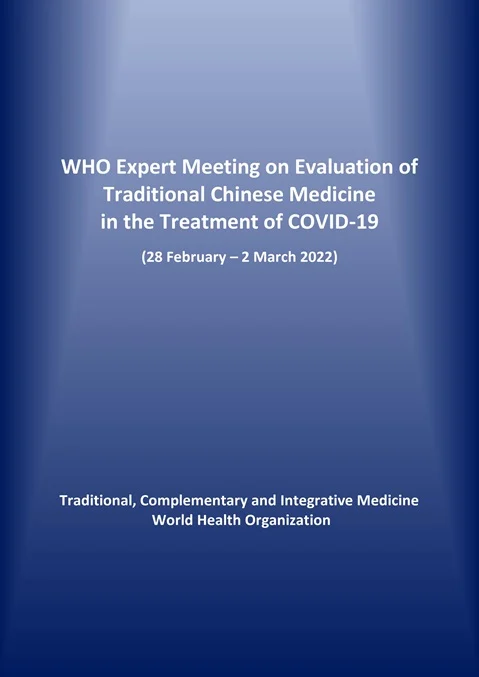Neurological symptoms
One in three people with long COVID experience neurological symptoms. These symptoms can linger for weeks or months after the initial COVID-19 infection which including:
- “Brain fog” difficulty thinking, reasoning or concentrating) after COVID-19
- Eye issues, including blurry vision or double vision
- Headaches
- Loss of taste and loss of smell (parosmia)
Cardiovascular symptoms
Severe COVID-19 infections can cause long-term heart damage. But people who had mild COVID symptoms can also have recurring or chronic heart and vascular problems. These include:
- Blood clots and vein (vascular) damage
- Chest pain
- Dizziness when standing up (orthostatic hypotension)
- Fast-beating or pounding heart (heart palpitations)
- High blood pressure (hypertension)
Respiratory symptoms
Long COVID can cause persistent problems with the lungs and oxygen levels in the body. Many people with long COVID experience lingering:
- Cough
- Exhaustion after little exertion
- Fatigue
- Hypoxia (low levels of oxygen in tissues throughout the body)
- Shortness of breath
Mental health symptoms
A range of psychological problems can occur after a COVID-19 infection. These issues can result from the virus itself or from the stressful experience of being treated for a serious illness. They may also come with the challenges of living with long-term physical symptoms. Mental health effects of long COVID include:
- Anxiety
- Depression
- Insomnia and other sleep disturbances
- Post-traumatic stress disorder (PTSD)
Highlights of the WHO Expert Meeting Report

P12 Members of the Expert Panel acknowledged that the study results showed that TCM resulted in a shorter time for resolution of the illness among the study participants,........The meeting noted that experience indicated the inflexibility of conventional medicine and the flexibility of TCM.
P13 Participants felt that there were sufficient data for the meeting to make a cautiously optimistic judgement that TCM could be helpful in the treatment of COVID-19.
P14 The experts agreed that the studies presented had applied appropriate and rigorous methodology given the context in which they were being conducted. Although the trials involved different settings, the data suggested that TCM was both safe and beneficial when combined with conventional antiviral medicine. It was agreed that there are promising data on the benefits of TCM in reducing the disease exacerbation rate for mild and moderate cases of COVID-19.
P15 In addition to routine treatment, the results from the studied TCMs suggest that, on the basis of clinically relevant outcome measures, the studied TCMs are beneficial in the treatment of COVID-19, particularly in mild-to-moderate cases.
P15 There are promising data to suggest that TCM is beneficial in reducing the risk of progression from mild-to-moderate cases to severe COVID-19.
P15 For mild-to-moderate cases, there is encouraging evidence that the studied TCMs, when administered as add-on interventions to conventional treatment, may shorten the time for viral clearance, resolution of clinical symptoms and length of hospital stay when compared to conventional treatment alone.
The following information is derived from www.cdc.gov at June 17, 2022
Definition
Post-COVID Conditions
Some people who have been infected with the virus that causes COVID-19 can experience long-term effects from their infection, known as post-COVID conditions (PCC) or long COVID
People call post-COVID conditions by many names, including: long COVID, long-haul COVID, post-acute COVID-19, post-acute sequelae of SARS CoV-2 infection (PASC), long-term effects of COVID, and chronic COVID.
Symptoms
People with post-COVID conditions (or long COVID) may experience many symptoms.
People with post-COVID conditions can have a wide range of symptoms that can last more than four weeks or even months after infection. Sometimes the symptoms can even go away or come back again.
Post-COVID conditions may not affect everyone the same way. People with post-COVID conditions may experience health problems from different types and combinations of symptoms happening over different lengths of time. Most patients’ symptoms slowly improve with time. However, for some people, post-COVID conditions may last months, and potentially years, after COVID-19 illness and may sometimes result in disability.
People who experience post-COVID conditions most commonly report:
General symptom
- Tiredness or fatigue that interferes with daily life
- Symptoms that get worse after physical or mental effort (also known as “post-exertional malaise”
- Feve
Respiratory and heart symptoms
- Difficulty breathing or shortness of breath
- Cough
- Chest pain
- Fast-beating or pounding heart (also known as heart palpitations)
Neurological symptoms
- Difficulty thinking or concentrating (sometimes referred to as “brain fog”)
- Headache
- Sleep problems
- Dizziness when you stand up (lightheadedness)
- Pins-and-needles feelings
- Change in smell or taste
- Depression or anxiety
Digestive symptoms
- Diarrhea
- Stomach pain
Other symptoms
- Joint or muscle pain
- Rash
- Changes in menstrual cycles
Symptoms that are hard to explain and manage
Some people with post-COVID conditions have symptoms that are not explained by tests.
People with post-COVID conditions may develop or continue to have symptoms that are hard to explain and manage. Clinical evaluations and results of routine blood tests, chest x-rays, and electrocardiograms may be normal. The symptoms are similar to those reported by people with ME/CFS (myalgic encephalomyelitis/chronic fatigue syndrome) and other poorly understood chronic illnesses that may occur after other infections. People with these unexplained symptoms may be misunderstood by their healthcare providers, which can result in a long time for them to get a diagnosis and receive appropriate care or treatment. Review these tips to help prepare for a healthcare provider appointment for post-COVID conditions.
Health conditions
Some people experience new health conditions after COVID-19 illness.
Some people, especially those who had severe COVID-19, experience multiorgan effects or autoimmune conditions with symptoms lasting weeks or months after COVID-19 illness. Multiorgan effects can involve many body systems, including the heart, lung, kidney, skin, and brain. As a result of these effects, people who have had COVID-19 may be more likely to develop new health conditions such as diabetes, heart conditions, or neurological conditions compared with people who have not had COVID-19.
People experiencing any severe illness may develop health problems
People experiencing any severe illness, hospitalization, or treatment may develop problems such as post-intensive care syndrome, or PICS.
PICS refers to the health effects that may begin when a person is in an intensive care unit (ICU), and which may persist after a person returns home. These effects can include muscle weakness, problems with thinking and judgment, and symptoms of post-traumatic stress disorder (PTSD). PTSD involves long-term reactions to a very stressful event. For people who experience PICS following a COVID-19 diagnosis, it is difficult to determine whether these health problems are caused by a severe illness, the virus itself, or a combination of both.
People More Likely to Develop Long COVID
Some people may be more at risk for developing post-COVID conditions (or long COVID).
Researchers are working to understand which people or groups of people are more likely to have post-COVID conditions, and why. Studies have shown that some groups of people may be affected more by post-COVID conditions. These are examples and not a comprehensive list of people or groups who might be more at risk than other groups for developing post-COVID conditions:
- People who have experienced more severe COVID-19 illness, especially those who were hospitalized or needed intensive care.
- People who had underlying health conditions prior to COVID-19.
- People who did not get a COVID-19 vaccine.
- People who experience multisystem inflammatory syndrome (MIS) during or after COVID-19 illness.
Health Inequities May Affect Populations at Risk for Long COVID
Some people are at increased risk of getting sick from COVID-19 because of where they live or work, or because they can’t get health care. Health inequities may put some people from racial or ethnic minority groups and some people with disabilities at greater risk for developing post-COVID conditions. Scientists are researching some of those factors that may place these communities at higher risk of both getting infected or developing post-COVID conditions.
People More Likely to Develop Long COVID Preventing Long COVID
The best way to prevent post-COVID conditions is to protect yourself and others from becoming infected. For people who are eligible, getting vaccinated and staying up to date with vaccines against COVID-19 can help prevent COVID-19 infection and protect against severe illness.
Research suggests that people who are vaccinated but experience a breakthrough infection are less likely to report post-COVID conditions, compared to people who are unvaccinated.
Learn more about protecting yourself and others from COVID-19.
Living with Long COVID
Living with a post-COVID condition can be hard, especially when there are no immediate answers or solutions.
However, people experiencing post-COVID conditions can seek care from a healthcare provider to come up with a personal medical management plan that can help improve their symptoms and quality of life. Review these tips to help prepare for a healthcare provider appointment for post-COVID conditions. In addition, there are many support groups being organized that can help patients and their caregivers.
Although post-COVID conditions appear to be less common in children and adolescents than in adults, long-term effects after COVID-19 do occur in children and adolescents.
Talk to your doctor if you think you or your child has long COVID or a post-COVID condition. Learn more: Tips for Talking to Your Healthcare Provider about Post-COVID Conditions
Data for Long COVID
Studies are in progress to better understand post-COVID conditions and how many people experience them.
CDC is using multiple approaches to estimate how many people experience post-COVID conditions. Each approach can provide a piece of the puzzle to give us a better picture of who is experiencing post-COVID conditions. For example, some studies look for the presence of post-COVID conditions based on self-reported symptoms, while others collect symptoms and conditions recorded in medical records. Some studies focus only on people who have been hospitalized, while others include people who were not hospitalized. The estimates for how many people experience post-COVID conditions can be quite different depending on who was included in the study, as well as how and when the study collected information. Estimates of the proportion of people who had COVID-19 that go on to experience post-COVID conditions can vary:
- 13.3% at one month or longer after infection
- 2.5% at three months or longer, based on self-reporting
- More than 30% at 6 months among patients who were hospitalized
CDC and other federal agencies, as well as academic institutions and research organizations, are working to learn more about the short- and long-term health effects associated with COVID-19 , who gets them and why.
Scientists are also learning more about how new variants could potentially affect post-COVID symptoms. We are still learning to what extent certain groups are at higher risk, and if different groups of people tend to experience different types of post-COVID conditions. These studies, including for example CDC’s INSPIRE and NIH’s RECOVERexternal icon , will help us better understand post-COVID conditions and how healthcare providers can treat or support patients with these longer-term effects. CDC will continue to share information with healthcare providers to help them evaluate and manage these conditions.














